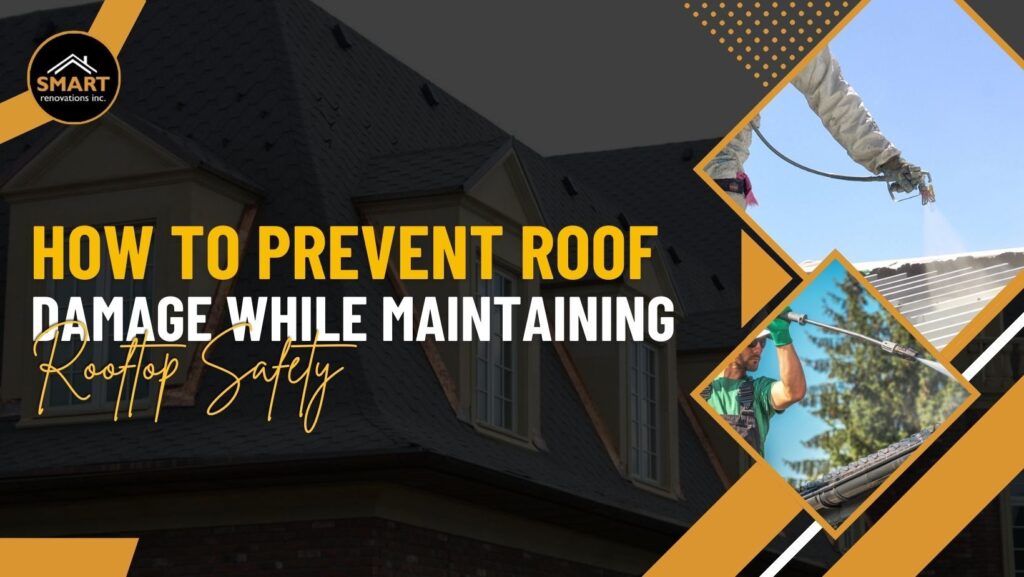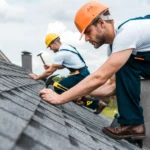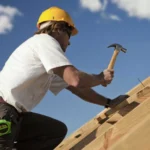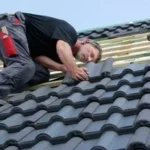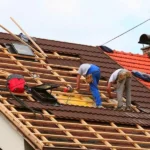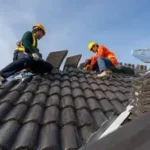Maintaining a safe and functional roof is essential for any property owner. Roof damage can lead to costly repairs and safety hazards that affect both the structure and its occupants. In this comprehensive guide, we will explore effective strategies to prevent roof damage and ensure rooftop safety, particularly for those considering flat roof repair New York. By understanding the common causes of roof damage and implementing preventive measures, you can significantly extend the lifespan of your roof.
Understanding Common Roof Damage: What Every Homeowner Should Know
Before diving into prevention techniques, it’s crucial to understand the common causes of roof damage that can arise over time:
- Weather Conditions: Severe weather conditions, including heavy rain, snow, hail, and strong winds, can severely impact the integrity of your roof. Understanding how different weather patterns affect your roof’s material is essential for effective maintenance.
- Poor Maintenance Practices: Neglecting regular inspections and maintenance can lead to unnoticed issues. A lack of proactive care can escalate minor problems into significant damage.
- Debris Accumulation: Leaves, branches, and other debris can trap moisture on your roof, leading to deterioration and mold growth. Regular cleaning is vital to prevent these issues.
- Improper Installation: If your roof was not installed correctly, it may be more susceptible to damage. Ensuring proper installation from the start can save you from future headaches.
Brighter Roof Colors for Boosting Energy and Appeal
10 Best Roofing Companies in the USA for Commercial Projects
Effective Prevention Strategies: How to Safeguard Your Roof
1. Conduct Regular Inspections to Identify Potential Issues Early
Conducting routine inspections is vital for roof maintenance. Check for signs of wear, such as cracks, leaks, or sagging. Aim for at least two inspections per year, ideally in spring and fall. During inspections, look for:
- Wear and Tear: Inspect shingles for cracks or missing pieces.
- Water Damage: Check for signs of leaks in your attic or ceilings.
- Structural Integrity: Ensure that the roof deck is stable and secure.
2. Clean Gutters and Drains Regularly to Promote Effective Water Flow
Clogged gutters can cause water to pool on your roof, leading to leaks and structural damage. Ensure that gutters and drains are clear of debris at least twice a year. Regular cleaning helps to:
- Prevent Water Backups: Ensure that rainwater flows freely away from your roof.
- Avoid Ice Dams: In winter, clogged gutters can lead to ice dams, which can cause additional stress on your roof.
3. Address Minor Issues Promptly to Avoid Major Repairs
If you notice small problems, such as a loose shingle or a tiny leak, address them immediately. Ignoring minor issues can result in larger, more expensive repairs later. Establish a routine for quick fixes, and consider:
- Using Roof Sealants: Apply sealants to minor cracks to prevent water intrusion.
- Reinforcing Weak Areas: Add extra support to areas that show signs of weakness.
4. Install a Roof Coating for Enhanced Protection and Longevity
A reflective roof coating can protect your flat roof from harmful UV rays and reduce heat absorption. This not only prolongs the roof’s lifespan but also improves energy efficiency. Benefits of roof coatings include:
- Extended Roof Life: Protects against deterioration caused by sun exposure.
- Energy Savings: Reduces cooling costs by reflecting sunlight away from the building.
5. Ensure Proper Drainage Systems for Flat Roofs
Flat roofs require effective drainage systems to prevent water accumulation. Ensure that your roof has proper slopes and that drains are functioning correctly. Consider these tips:
- Regular Maintenance: Check that drainage systems are clear and functioning.
- Install Additional Drains: If water pooling is a recurring issue, consider adding more drainage points.
Ensuring Rooftop Safety: Best Practices for Safe Roof Access
1. Use Proper Safety Equipment When Working on Your Roof
When working on your roof, always use proper safety equipment, such as harnesses, non-slip shoes, and helmets. This minimizes the risk of falls and injuries. Consider:
- Investing in Safety Gear: Purchase high-quality safety gear suited to roofing work.
- Establishing Safety Protocols: Create guidelines for safe roof access and maintenance.
2. Hire Professionals for Extensive Repairs and Maintenance
For extensive repairs or maintenance, consider hiring a professional roofing contractor. Their expertise ensures that the job is done safely and correctly. Benefits of hiring professionals include:
- Quality Workmanship: Professionals have the skills and tools needed to address complex issues.
- Safety Assurance: Reduces the risk of accidents and ensures compliance with safety regulations.
3. Educate Your Team on Rooftop Safety Practices
If you have a maintenance team, ensure they are educated on rooftop safety practices. Regular training can help prevent accidents. Implement training sessions that cover:
- Proper Ladder Use: Teach safe ladder practices for accessing roofs.
- Emergency Procedures: Ensure your team knows how to respond to accidents or emergencies.
Conclusion: Protecting Your Investment with Proactive Roof Maintenance
Preventing roof damage while maintaining rooftop safety is critical for homeowners and property managers alike. By following these strategies and considering flat roof repair in New York when necessary, you can protect your investment and ensure the longevity of your roof. Regular maintenance and prompt attention to issues will save you time and money in the long run.
For professional assistance with your roofing needs, contact Smart Renovation Inc. Our team of experts is dedicated to ensuring your roof remains safe, secure, and in optimal condition.
Check our google store: Smart Renovation Inc

